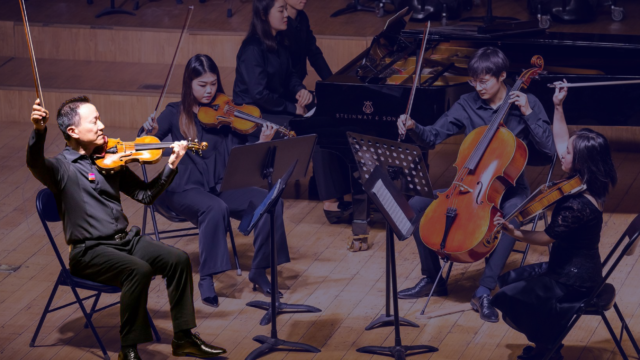Power of Inclusion – Introduction

Inclusion is fundamental to a healthy organizational culture1 and a key driver of long-term success. For many orchestras, building an inclusive culture is both a strategic imperative and an expression of core values. Inclusion directly supports better results, greater collaboration, and stronger retention, while also making the workplace more humane, equitable, and effective for everyone.
Inclusion manifests in a number of positive feelings among employees, which we define as follows:
- Respect: feeling accepted and being treated fairly and with dignity.
- Safety: feeling welcomed and comfortable sharing thoughts, ideas, and disagreement without fear of retribution.
- Empowerment: feeling a sense of purpose and agency to contribute towards achieving the organization’s vision.
- Connection: feeling a sense of belonging, having meaningful interactions at work, and feeling aligned to the organization’s values.
- Support: feeling equipped to get work done and achieve your potential, while having a healthy work-life balance.
- Acknowledgement: feeling seen and valued and being recognized as an individual making unique contributions to the organization.
For mission-driven organizations, inclusion is essential to delivering on our values: we cannot serve our communities effectively if we’re not also fostering care, respect, and belonging among our own staff and musicians. Orchestras rely on people who are committed, motivated, and able to work well together under pressure. That’s far more likely to happen when individuals feel valued, heard, and part of something larger than themselves.
In challenging times—when resources are stretched, pressure is high, and decisions must be made quickly—the value of inclusion only grows. A strong culture of inclusion helps ensure that people remain connected, motivated, and able to work at their best, even in difficult circumstances, and that decisions benefit from varied perspectives. Efforts to promote inclusion are especially critical for people with a different background from those around them. Managing power dynamics, generational differences, and the flow of information through formal hierarchies are all important in ensuring every person in the organization feels included (especially when staff and musicians may have very different roles, experiences, and employment structures).
This Catalyst Guide draws on the aggregated findings of the League of American Orchestras’ Inclusion Index2, a project enabling orchestras to assess and benchmark their organizational cultures. A group of 60 orchestras of all budget sizes self-selected to participate in this project, distributing a survey designed by Accordant Advisors to their musicians and staff members. Anonymous responses from 1,936 musicians and 833 staff members became the basis for reports to each participating orchestra, as well as an overall report to the League.
This Guide presents key insights from this report and tells the stories of ten orchestras whose Inclusion Index scores ranked highly within their budget groups. Orchestras across the country, from big-budget to community orchestras, are represented here, sharing experience and advice that can help the whole field. The stories in these pages show that a workplace where all musicians and staff feel they belong and personally contribute to a worthy mission is a hallmark of a thriving orchestra that is equipped to meet today’s challenges, whatever its budget size. We intentionally focus on the experiences of musicians and staff, recognizing that both groups play critical roles in shaping organizational culture from within. Boards also have significant influence in setting the tone and priorities of an orchestra and their support is key to sustaining progress in the longer term.
- Simon Woods, “Forward Thinking: Culture Matters,” Symphony, July 19, 2024
- The Inclusion Index is a component of the League of American Orchestras’ Inclusive Stages program, a major national initiative to increase the racial diversity of musicians in American orchestras. Inclusive Stages works through a national coalition of orchestras aligned around change and relies on data collection to provide a comprehensive understanding of the evolving state of the field.
Photo: Charlotte Symphony Orchestra musicians, staff, and leadership visit the CSO’s mobile stage, CSO Roadshow, during fabrication. Photo courtesy of the Charlotte Symphony Orchestra.
Related
-
Learn | Equity, Diversity & Inclusion
Discover the Power of Inclusion in Orchestra Culture
-
Learn | Equity, Diversity & Inclusion Member-only Content
Discover the Power of Inclusion in Orchestra Culture
-
Learn | Equity, Diversity & Inclusion
Catalyst Guide: The Power of Inclusion
Become a member
Thank you for your interest in the League of American Orchestras! We are dedicated to advancing the orchestral experience for all.
Join Now

